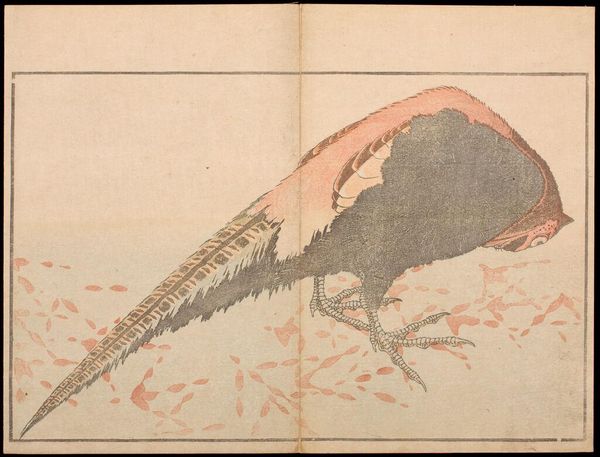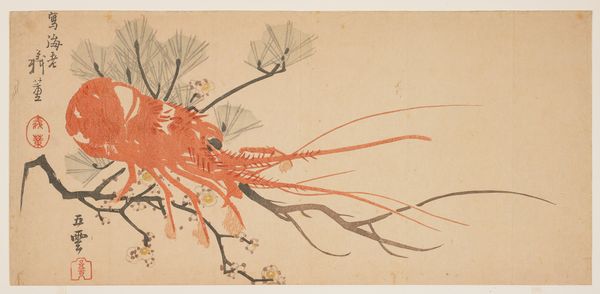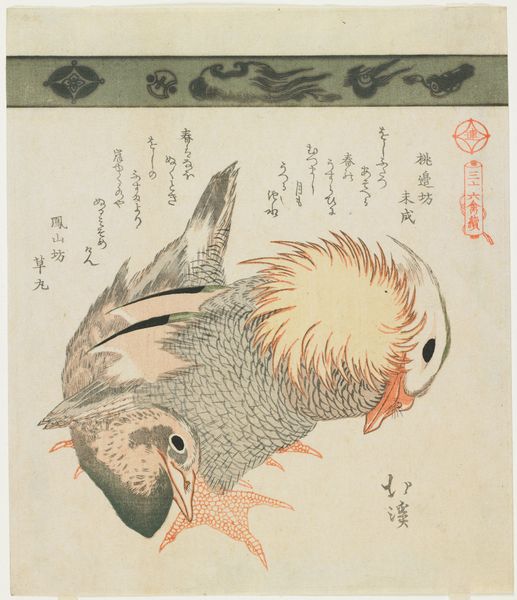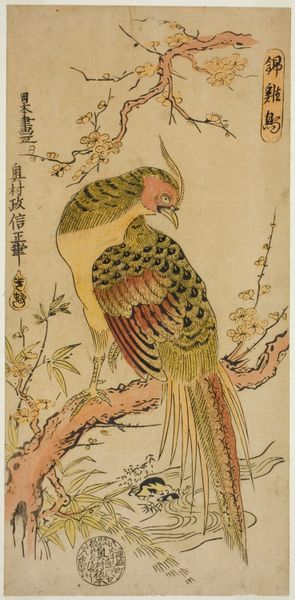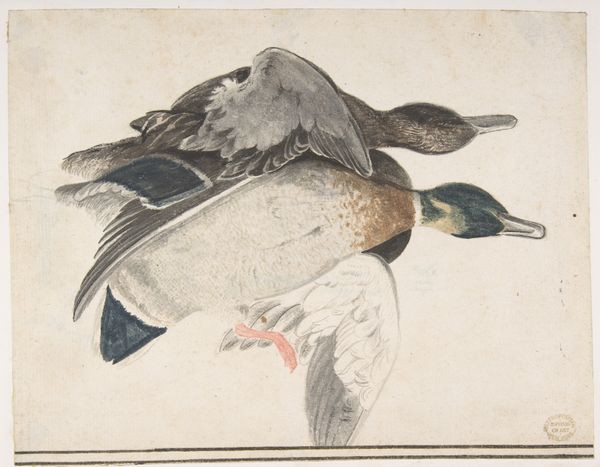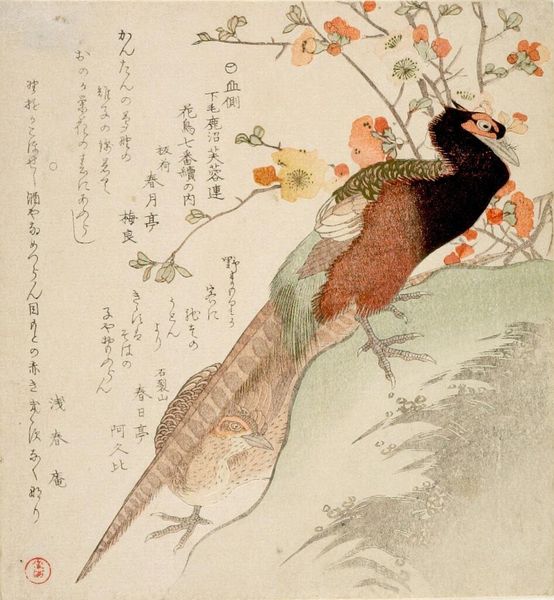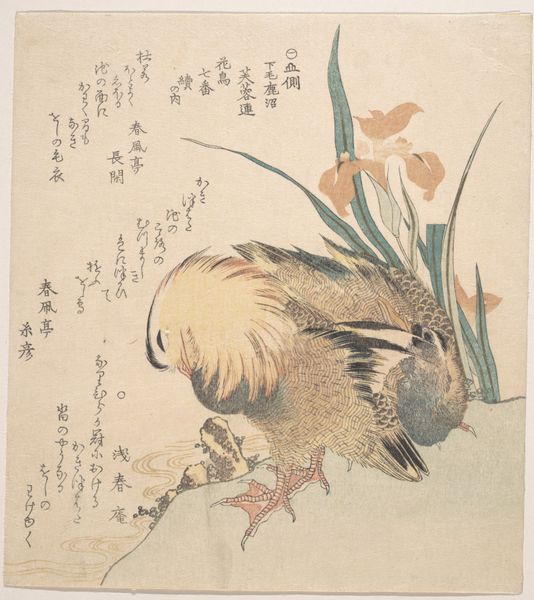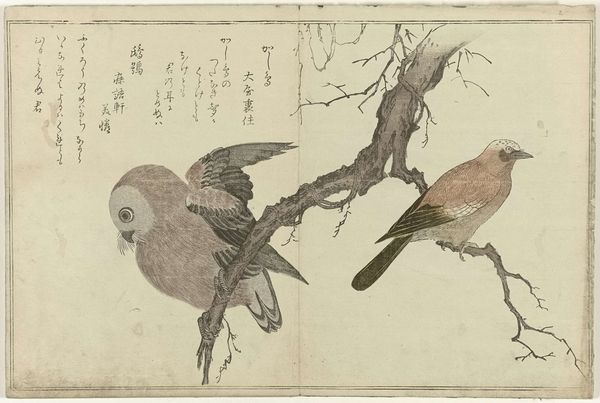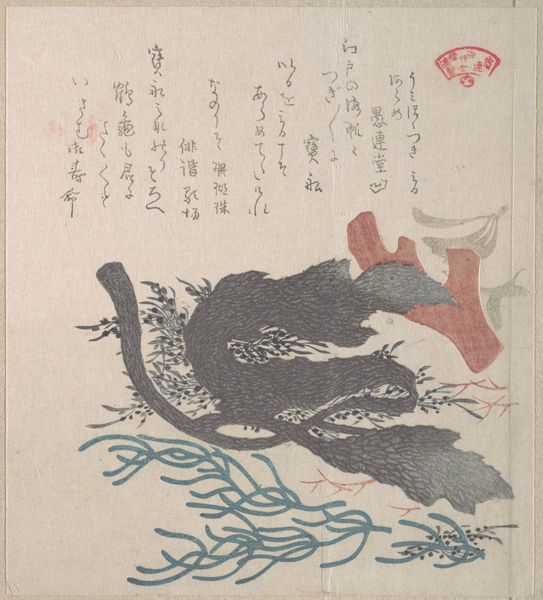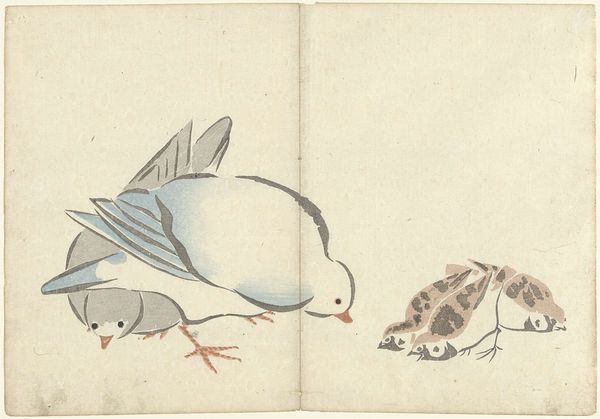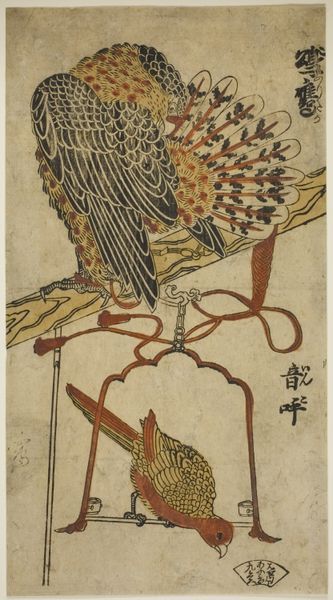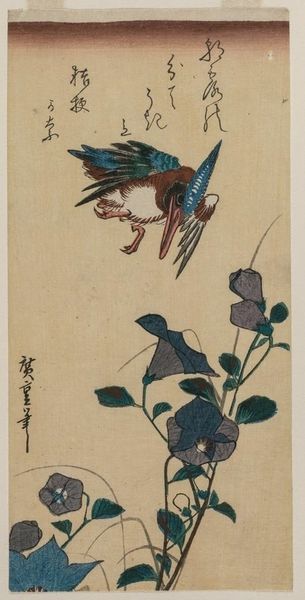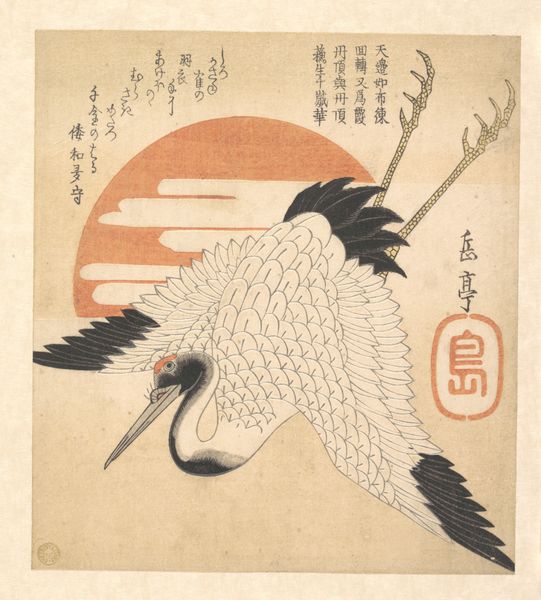
painting, print, watercolor
#
painting
# print
#
asian-art
#
bird
#
ukiyo-e
#
figuration
#
watercolor
#
coloured pencil
#
orientalism
Dimensions: 9 x 12 1/2 in. (22.9 x 31.8cm)
Copyright: Public Domain
Curator: Hakusanjin Hokui, a Japanese artist who was active in the first half of the 19th century, is the creator of this work simply titled "Bird," estimated to have been produced between 1830 and 1840. It’s a watercolor print presently held at the Metropolitan Museum of Art. What are your initial thoughts on this unassuming avian? Editor: Well, it's melancholic, isn’t it? A somber little fellow, head bowed, lost in thought or maybe just exhausted. The composition gives it such a delicate, fleeting presence, like a haiku about the end of the day. Curator: The ukiyo-e tradition, to which Hokui belonged, elevated everyday subjects to art, reflecting the pleasures and observations of urban life. “Bird” certainly aligns with this aesthetic, capturing a quiet moment in nature. It also subtly represents the growing artistic trade fostered in the 19th-century world. Editor: Absolutely. You can almost hear the brushstrokes whispering across the paper. And look at the detail in those claws! The artist really made the subject present for the viewer. It is less idealized, and more naturalistically oriented in its attention to anatomical veracity. Curator: That commitment to observational accuracy coexisted with stylistic conventions is certainly an achievement that reveals the cultural values related to realism at the time. The print represents the values associated with close study of the natural world—a fashionable cultural theme present also in Western portraiture, for example. Editor: True, although this doesn't have that posed, aristocratic air you see in, say, an Ingres portrait. There is a gentler quality, but I also notice the limited palette is a crucial piece here in affecting the overall pensive feel, it all feels purposeful and serene. Curator: I agree. The work, while seemingly simple, prompts complex reflection on nature, art, and the passage of time within a particular historical and cultural frame. Editor: A perfectly captured fleeting moment. I leave here today more aware than before about the artistic skill on display in capturing such profound emotional resonance with the humblest of subjects.
Comments
No comments
Be the first to comment and join the conversation on the ultimate creative platform.
